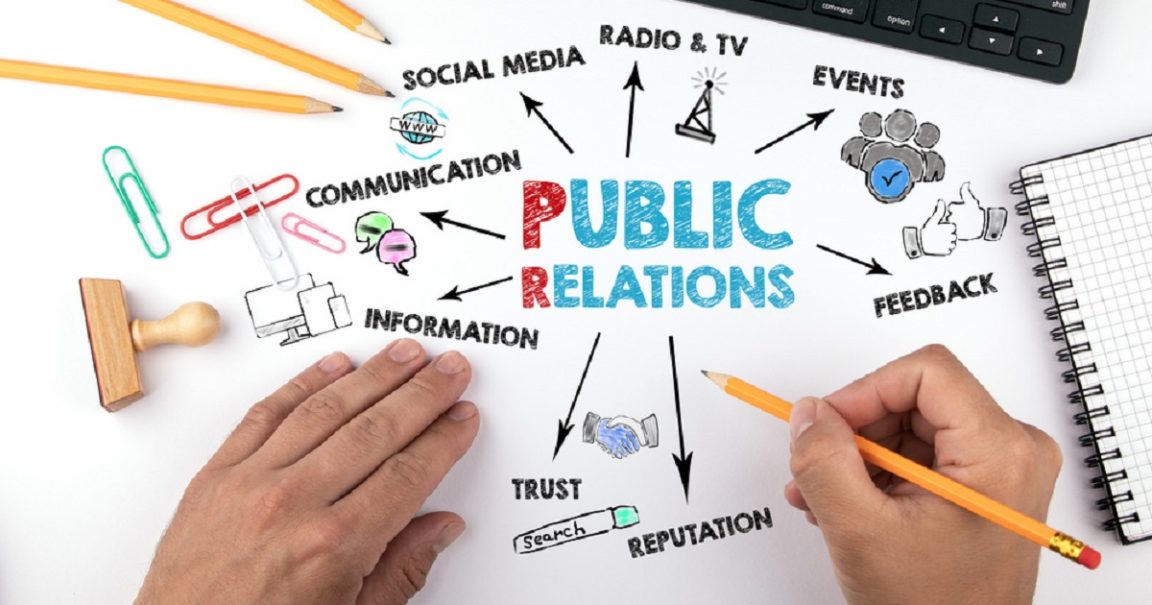One of the ways to ensure your business stands out from a highly competitive industry is developing a public relations strategy. Creating one that specifically caters to the needs of your business is the key to maintaining an edge against the competition.
If one of your goals is to grow your business, there are several crucial tasks to consider, such as spreading the word about a new product. Due to how quickly marketing and promotional messages flow, it’s crucial to stand out from all the buzz and ensure your brand’s message stands out. One of the ways to ensure a good start with public relations is by checking out an online source, such as https://www.sortlist.co.uk, and other reliable agencies.
A Close Glimpse At What A PR Strategy Is All About
Generally, a PR strategy has the main objective of boosting the overall image of your brand. The strategy involves several actions to gain the right publicity and coverage for your brand on relevant podcasts, publications, media outlets, and blog or social media posts to reach your brand’s short- and long-term PR objectives.
In simple terms, it works similarly to a marketing strategy since it mainly focuses on spreading the word about your brand but lacks business objectives involving sales.
In most scenarios, a PR strategy is crucial to spreading the word about your brand to boost recognition and maintain positive relationships with the target audience and stakeholders. Additionally, the strategy has another important purpose, which is crisis management. A clear example is dealing with a scenario involving potential damage to your brand’s image.
Key Considerations In Building A PR Strategy
The key is to develop a public relations strategy capable of gaining attention from influencers and a target audience who can drive your announcement further. It’s crucial to remember that creating a successful PR strategy involves several steps involving research and goal-setting before implementation.
Here are several insightful considerations to keep in mind when creating a PR strategy for your small business:
1. Define The Goals Of Your Company
When creating a PR strategy, it should start with well-considered goals based on detailed research. The best way to start is to thoroughly review the previous year’s public relations activity and decide what you want to modify or improve in the upcoming months. Note down the types of effective story pitches, the writers or outlets that gave positive responses, and the content capable of gaining attention on social media. From that point, decide on the goals you want to achieve for the year. For example, it can be raising brand awareness, introducing a new product or service, or boosting reputation. When creating your goals, you should fully understand your business plan and the previous PR strategies you have utilized in the past.
2. Know Your Brand’s Target Audience
Determining your target audience is also one of the most important considerations in creating a successful PR strategy. The ideal approach is to determine the specific individuals you want to reach out to while considering your current customers. After gaining a perspective, create audience personas to assist you in gaining insights into the location, priorities, behaviours, and demographics.
3. Understand What The Competition Is Doing
Creating the ideal PR strategy for your small business also requires knowledge about the competition. Knowing what the competition utilizes in their campaigns is important, especially the content and promotional messages. Consider checking out the coverage of competing products or services. Another option is to take a glimpse at the social media feeds. Doing so will give you a better understanding and insight into what works and what their audience responds to. At this point, make sure you’ll consider external factors that may influence your business, such as current events. It’ll be handy in developing a proactive plan while preventing unintentional mistakes.
4. Create An Outline Of Your Brand’s Key Messages
One of the main elements of your PR strategy is being able to spread the word about your brand. At this point, consider noting the key directives you want to feature via your PR efforts. Remember that they must be concise, memorable, and readily discernible. Once you have your key messages ready, they’ll serve as your guide in creating content, which can be a press release, social media campaign, or any form of advertisement.
5. Implement The Fitting Tactics
After conducting thorough research and outlining the key messages, choose the suitable tools and tactics for your PR strategy. For example, to ensure the successful launch of a new product, some tactics may include sharing social media posts showcasing the product features, sending a news release, and encouraging influencers to write and share reviews.
If your company is entering into a strategic partnership with a well-known organization or launching a joint initiative with a prominent brand, hosting a virtual press conference can be an effective way to generate widespread awareness and media coverage. During the conference, key stakeholders from both partnering entities can provide insights into the collaboration, discuss its significance, and answer questions from the attending media.
6. Establish Partnerships With Influencers
Due to the main role social media and influencers play in spreading the word about your brand, consider partnering with one or two. Your business can leverage partnerships with influencers to gain attention for your products or services. It’s crucial to remember that this form of partnership can be a brand collaboration or having an influencer function as a spokesperson or ambassador for your brand.
A good example is partnering with a style influencer to become your upcoming bag brand ambassador. The ideal way to spread awareness about your latest partnership is to submit a press release. Presenting a popular influencer in your headlines or content helps incentivize more publications to consider what your brand offers. It also encourages viewers to take a closer look at your stories.
Another example of leveraging partnerships with influencers is collaborating with Pinterest influencers to promote your home decor brand. You could identify influential Pinterest users who curate boards related to interior design, home styling, or DIY projects. These influencers often have a dedicated following and are interested in home improvement and aesthetic inspiration.
7. Analyze The Results
One of the crucial considerations when developing a PR strategy is measuring the outcome. Make it a priority to monitor several crucial factors, such as engagement, website traffic, and the reach of social media posts, to name a few. Gather all these elements to create a report. You can use it as a starting point to evaluate the success and failure of your future PR strategy.
Monitor engagement across various platforms, including social media channels, press releases, and media coverage. Track metrics such as likes, shares, comments, and retweets to determine the level of audience interaction with your content. Moreover, track unique visitors, page views, and bounce rate using analytics tools.
Assess the reach of your social media posts by tracking metrics such as impressions, reach, and follower growth. Identify which platforms are most effective for amplifying your PR messages and allocate resources accordingly. Gather feedback from key stakeholders, including customers, partners, and employees, to gain insights into their perceptions of your brand and its PR initiatives. Conduct surveys or interviews to gauge brand awareness, reputation, and sentiment.
Final Thoughts
Developing the ideal PR strategy is important for levelling up your brand’s profile, especially in a highly competitive industry. A successful strategy can boost your brand’s reputation, gain new customers, and improve brand awareness. Considering these pointers will serve as your guide in creating a PR strategy that ensures your company achieves its goals and stands out in the market.





